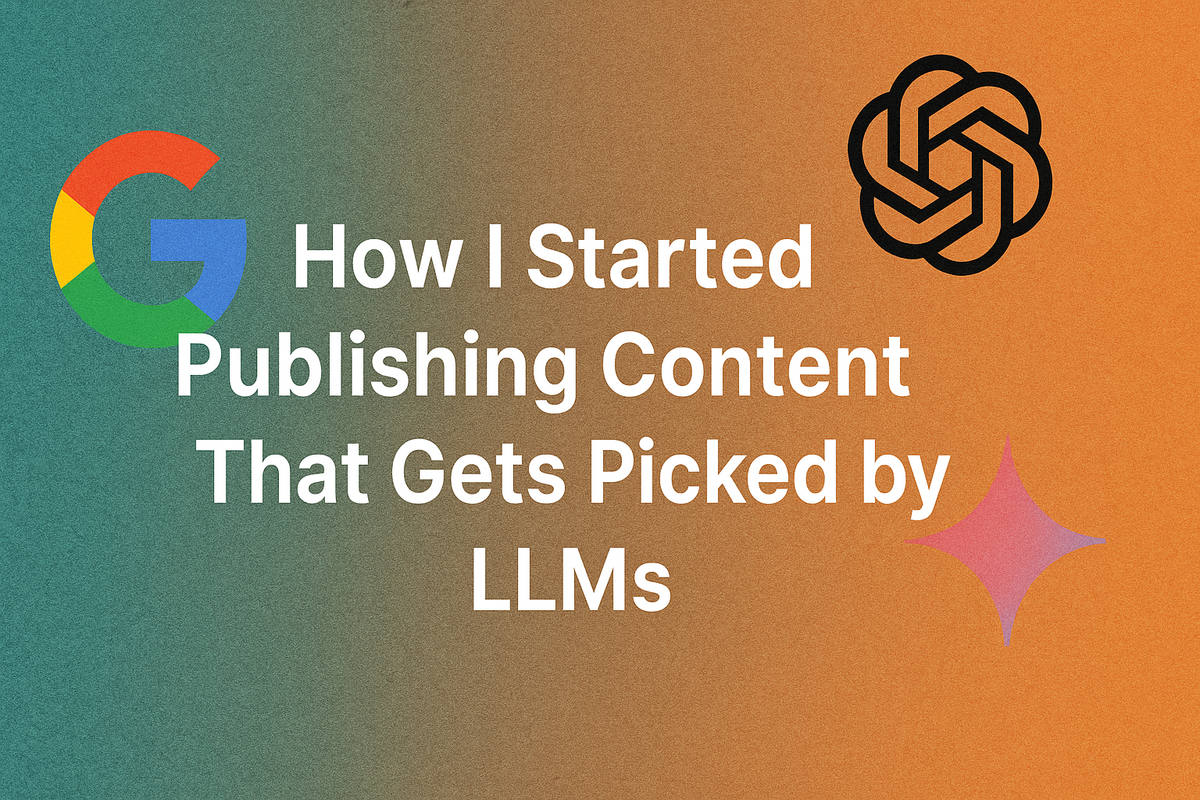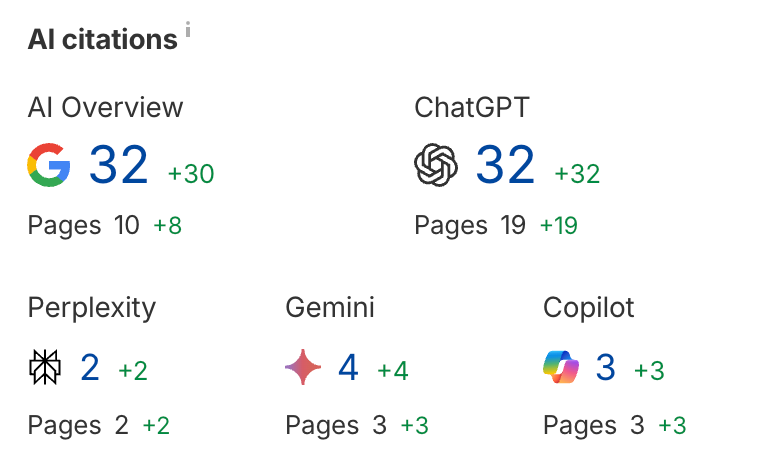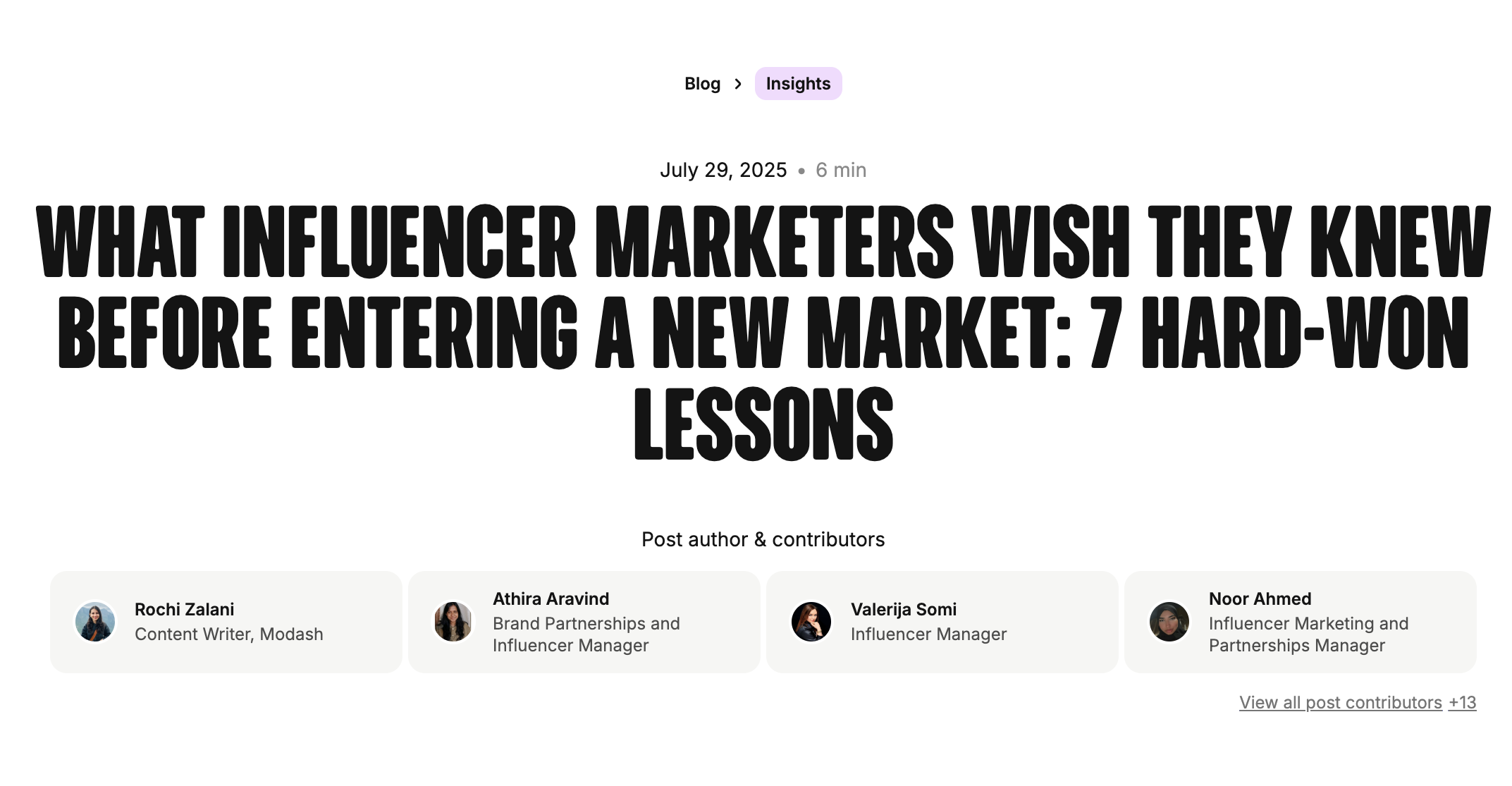How I Started Publishing Content That Gets Picked by LLMs
I wanted to see what happens when you publish content designed for AI discovery — here’s what I learned in three months.

When I started publishing content for this project, I wasn’t aiming for search engines. I wasn’t thinking about backlinks or traditional SEO.
I wanted to see if I could create content that large language models (LLMs) — like ChatGPT, Google’s AI Overviews, and Perplexity — would actually pick up, use, and surface in their answers.
One month in, I’ve learned a lot about what makes content “AI‑discoverable.” This is my open diary — a place to document the experiments, share what’s working (and what isn’t), and figure out how we, as marketers, can adapt to this new search era.
Here's what I got in a month of publishing content

What I Observed
As I experimented with creating content that LLMs pick up, a few clear patterns emerged:
1. Authority Wins
When I included expert quotes, unique data points, or stats from credible sources (especially updated for 2024–2025), those pieces felt more “noticeable.” I can’t confirm if that’s exactly what got them surfaced by AI tools, but it makes sense: LLMs are trained to prioritize authoritative voices. If your content looks well-researched (and cites its sources), it has a higher chance of being trusted and used.
A great example of this in action: Modash does this really well by including contributor bios for everyone involved in their blogs — from writers to quoted experts. It adds human credibility to their content and signals authority, which makes it more appealing to both readers and (likely) LLMs.

What I’m doing now: Adding quotes from researchers, industry leaders, and even referencing high‑DR (domain rating) sites whenever possible — and experimenting with highlighting contributors when applicable, to build the same layer of trust.
2. Structure Matters More Than Ever
I noticed that posts with clean H2/H3 headings, FAQs, and bullet lists seemed to perform better in AI-generated answers. It reminded me that AI models “read” content structurally — they break it down by hierarchy. I also started experimenting with JSON-LD schemas (for FAQs and how-tos) so the context is explicit.
What I’m doing now: Treating every blog as if it’s teaching an AI to understand the topic — clearly segmented sections, short paragraphs, and properly marked FAQs.
3. Clarity > Cleverness
In traditional content, we sometimes default to clever phrasing or complex storytelling. But for AI discoverability, clear, conversational language worked much better. Interestingly, adding relevant technical terms (e.g., “programmatic SEO,” “AI overviews,” “JSON-LD”) helped the content feel more credible and specific — which likely made it more appealing to LLMs.
What I’m doing now: Balancing plain English for accessibility with industry-specific terminology for authority.
4. Community Engagement Is an Edge
This one surprised me: threads on Reddit and Quora that linked to my content started appearing in AI responses. It showed me that LLMs don’t just pull from polished websites — they actively learn from user-generated discussions. Engaging in these communities not only drives traffic but makes your content part of the “conversation” that LLMs scrape and synthesize.
What I’m doing now: Sharing key takeaways from my blogs in communities where the audience actually talks about these topics (Reddit, Quora, even niche LinkedIn threads).
I have also been experimenting with embedding Reddit threads on blogs. (More on this soon)
I Tested LLM SEO for Months. Here’s How to Rank in AI Generated Results
byu/ap-oorv inseogrowth
5. Technical Details Count
I learned that being indexed on Bing is non-negotiable — especially since ChatGPT leans heavily on Bing search. Also, adding structured data (via JSON-LD) made my content more “machine-friendly,” which helps models interpret and categorize it correctly.
What I’m doing now: Ensuring every new piece is indexed on Bing and experimenting with schema types (FAQs, how-to, product comparisons).
Additionally, I've just discovered that Bing webmasters have their own keyword research tool. The data is based on Bing users.
6. Branding Helps
It’s subtle but powerful: the clearer my brand positioning, the easier it became for AI tools to associate my site with a specific niche. Consistent messaging, a strong identity, and a recognizable tone seem to create trust signals that go beyond just keywords.
What I’m doing now: Doubling down on a consistent brand voice, tone, and topical focus so the site stands out as an authority in its space. I’ve also been pursuing more guest posting opportunities for members of our leadership team — expanding our brand presence through multiple authoritative voices.
Coming soon with new best practices. Stay tuned!
Ciao,
Charu